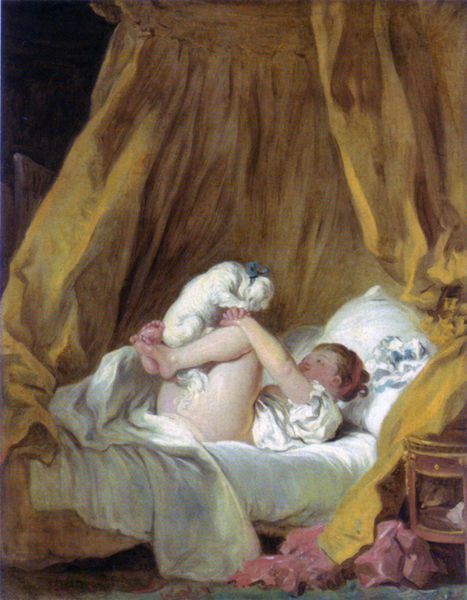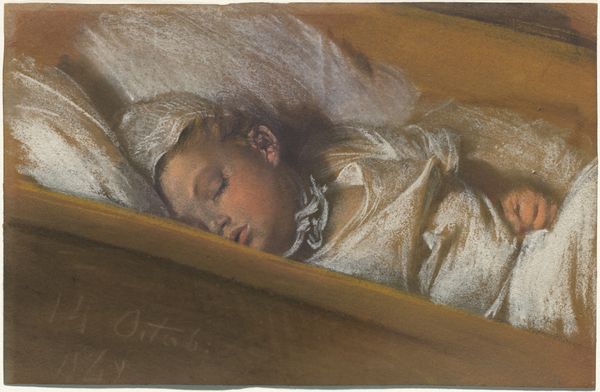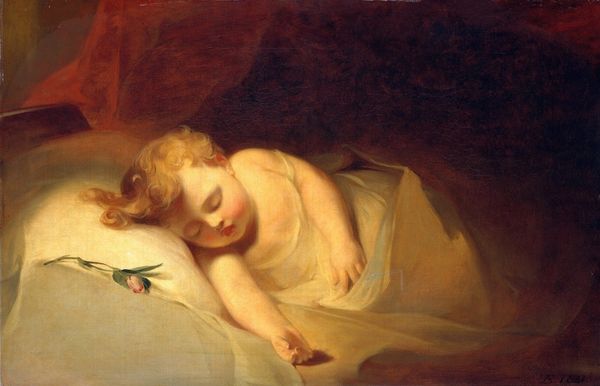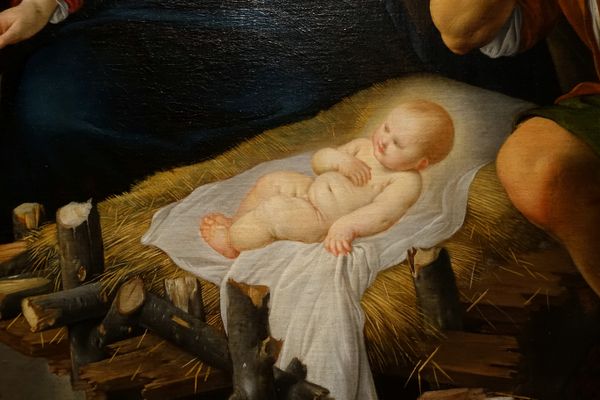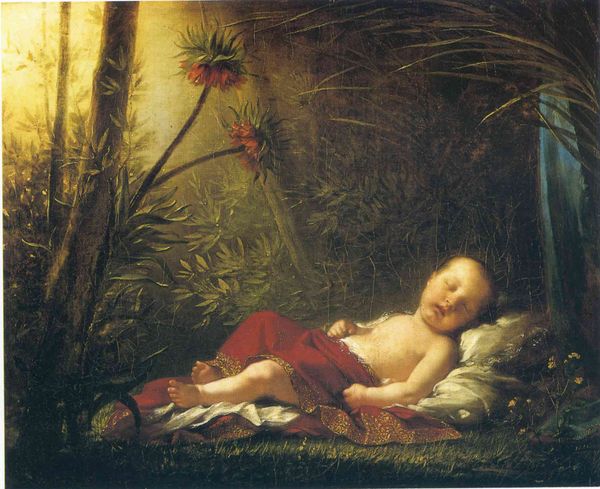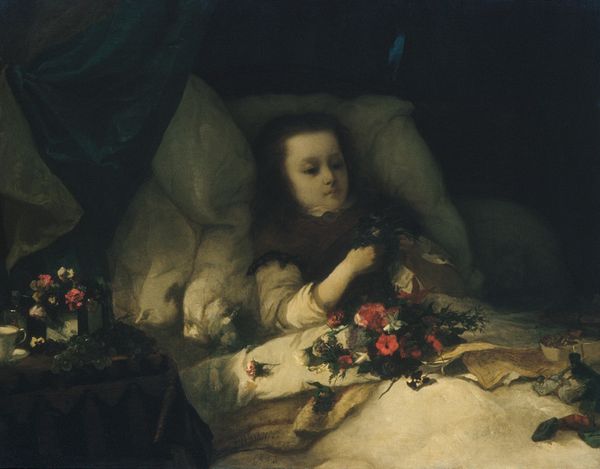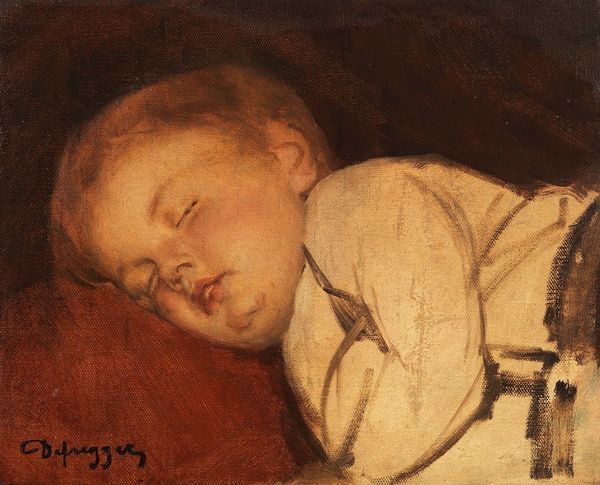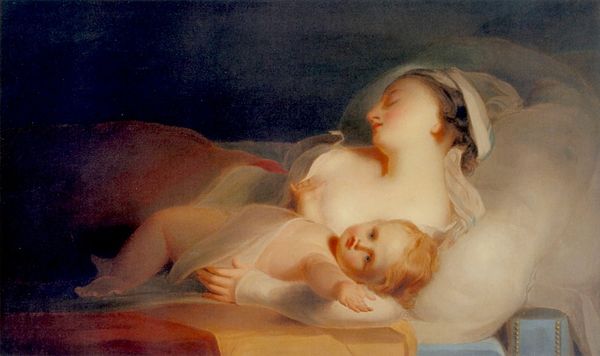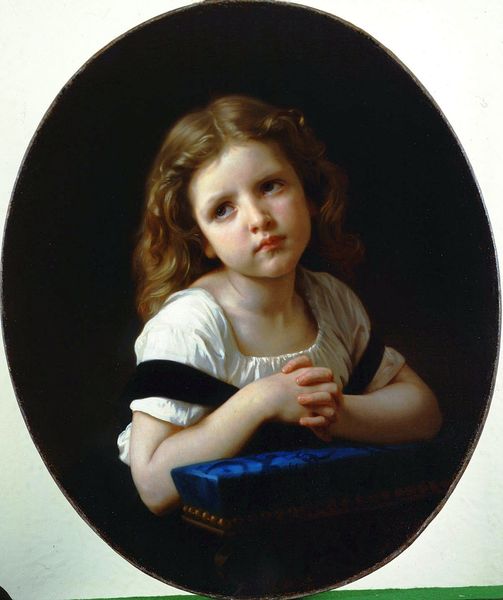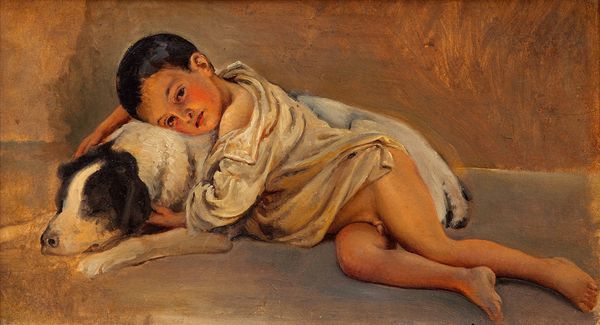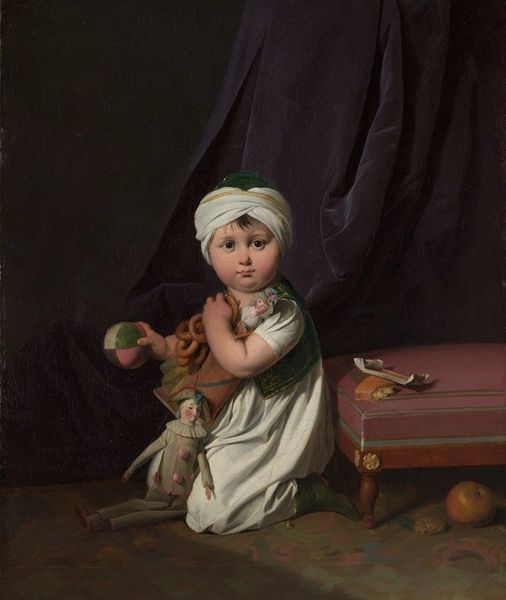
painting, oil-paint
#
portrait
#
gouache
#
painting
#
oil-paint
#
figuration
#
child
#
intimism
#
genre-painting
#
nude
#
realism
Dimensions: 50 x 60 cm
Copyright: Morteza Katouzian,Fair Use
Curator: This piece, titled "Untitled," was created by Morteza Katouzian in 1990, using oil paint as his medium. Editor: It's undeniably intimate. The soft light and focus on the sleeping child create an atmosphere of peace, almost fragile in its tranquility. Curator: The composition, with its dramatic chiaroscuro, owes much to Baroque painting and portraiture. Katouzian’s technical skill evokes the intimate genre paintings favored by a bourgeois class in the 19th century. It also carries implications about representations of children within the Iranian diaspora. Editor: You're right. I'm particularly struck by how this representation avoids the prevalent Western fetishization of childhood innocence, that's very visible when considered against art-historical references. The child, sleeping soundly with its pacifier close by, has a universality that resonates beyond cultural boundaries. Is the work perhaps commenting on socio-economic struggles impacting Iranian children during this period, with a perspective emphasizing resilience? Curator: The symbolism of sleep, the discarded pacifier...they speak to vulnerability, but also, perhaps, the shedding of an earlier dependence and maybe a growing sense of self. The artwork situates childhood and questions of selfhood within a nexus of global issues. The almost sculptural treatment of the child against a very dark background accentuates the importance and the political weight of the young subject's developing consciousness within the framework of Realism and Iranian portraiture of this time. Editor: The fact that it's untitled invites interpretation. Does the ambiguity extend the themes—migration, diasporic identity, the vulnerability of children globally, their endurance within complex geopolitical dynamics—beyond specificity? Curator: Absolutely. The title absence encourages the viewer to look beyond the literal representation, allowing them to project their own associations and narratives onto the scene, underscoring childhood experience worldwide as a politically charged act. Editor: It's interesting to consider its historical moment, how it anticipates current debates on identity politics, art, and cultural agency. A testament to the power of painting to invite thoughtful consideration and question inherited cultural structures, perhaps.
Comments
No comments
Be the first to comment and join the conversation on the ultimate creative platform.

